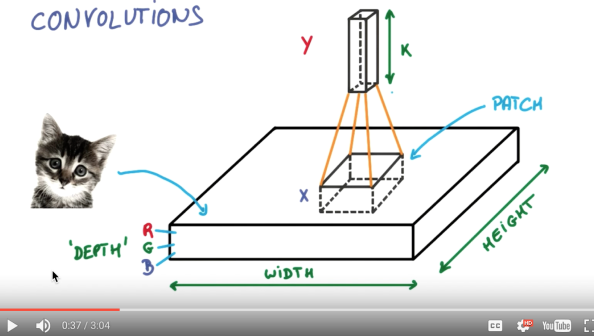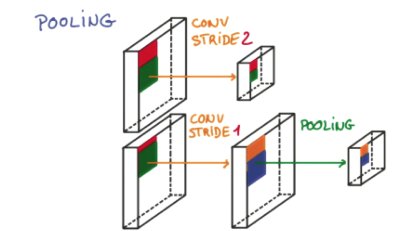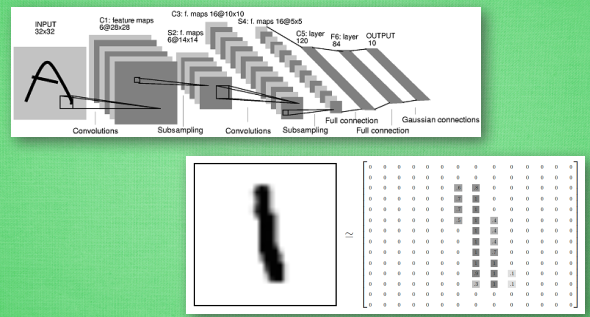Convolutional Neural Networks,CNN 也是一种前馈神经网络,其特点是每层的神经元节点只响应前一层局部区域范围内的神经元(全连接网络中每个神经元节点响应前一层的全部节点)

pooling

研究发现, 在每一次卷积的时候, 神经层可能会无意地丢失一些信息. 这时, pooling 就可以很好地解决这一问题. 而且池化是一个筛选过滤的过程, 能将 layer 中有用的信息筛选出来, 给下一个层分析.
同时也减轻了神经网络的计算负担. 也就是说在卷集的时候, 我们不压缩长宽, 尽量保留更多信息, 压缩的工作就交给池化了,这样的一项附加工作能够很有效的提高准确性. 有了这些技术,我们就可以搭建一个 CNN.

1 | import numpy as np |
数据集 MNIST
1 | # download the mnist to the path '~/.keras/datasets/' if it is the first time to be called |
1. data pre-processing
1 | X_train = X_train.reshape(-1, 1,28, 28)/255. |
2. build model
1 | # Another way to build your CNN |
再添加第二, 卷积层和池化层
1 | # Conv layer 2 output shape (64, 14, 14) |
Fully connected layer 1 input shape (64 * 7 * 7) = (3136), output shape (1024)
1 | model.add(Flatten()) |
Fully connected layer 2 to shape (10) for 10 classes
1 | model.add(Dense(10)) |
define your optimizer
1 | # Another way to define your optimizer |
keras.layers.Conv1D 1D 卷积层 (例如时序卷积)
Keras Convolution1D与Convolution2D区别
_________________________________________________________________
Layer (type) Output Shape Param #
=================================================================
conv2d_3 (Conv2D) (None, 32, 28, 28) 832
_________________________________________________________________
activation_5 (Activation) (None, 32, 28, 28) 0
_________________________________________________________________
max_pooling2d_3 (MaxPooling2 (None, 32, 14, 14) 0
_________________________________________________________________
conv2d_4 (Conv2D) (None, 64, 14, 14) 51264
_________________________________________________________________
activation_6 (Activation) (None, 64, 14, 14) 0
_________________________________________________________________
max_pooling2d_4 (MaxPooling2 (None, 64, 7, 7) 0
_________________________________________________________________
flatten_2 (Flatten) (None, 3136) 0
_________________________________________________________________
dense_3 (Dense) (None, 1024) 3212288
_________________________________________________________________
activation_7 (Activation) (None, 1024) 0
_________________________________________________________________
dense_4 (Dense) (None, 10) 10250
_________________________________________________________________
activation_8 (Activation) (None, 10) 0
=================================================================
Total params: 3,274,634
Trainable params: 3,274,634
Non-trainable params: 0
_________________________________________________________________
3. compile model
设置adam优化方法,loss函数, metrics方法来观察输出结果
1 | # We add metrics to get more results you want to see |
4. train model
1 | print('Training ------------') |
5. evaluate model
1 | print('\nTesting ------------') |






Checking if Disqus is accessible...